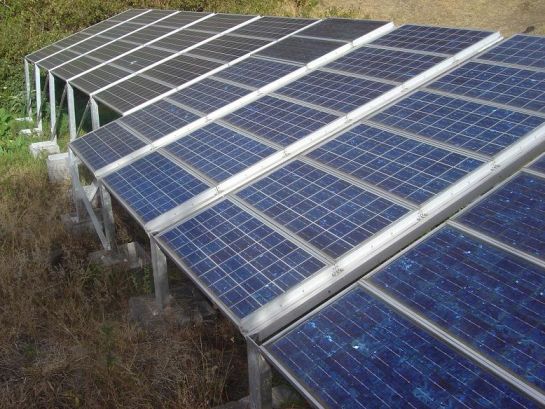High cost is one of the disadvantages of using renewable energy sources. Researchers are now trying to develop efficient solar panels in an easier and cheaper way

High cost is one of the disadvantages of using renewable energy sources. Researchers are now trying to develop efficient solar panels in an easier and cheaper way. One of these researchers suggests more cost-effective synthetic methods using sulfur-based ferrites (chalcopyrites) instead of those used today.
Thin layers used in photovoltaic applications are obtained by expensive synthesis processes that require continuous improvements, explains researcher Purificación Escribano. "We decided to offer a cheaper synthetic process for preparing thin layers based on the structure of chalcopyrites as an alternative to forge, which is a highly effective material but expensive to produce," explains one of the researchers.
According to the researcher, the research allowed them to provide a material that is similarly attached to a thin layer and has applications in highly efficient photovoltaic energy storage systems. Admittedly, a cheaper method has been proposed but further experiments are still needed to improve it. In any case, there is no doubt that the research is an important step towards this goal. Technologies using chalcopyrite-based materials have high performance and stability, and for these reasons they are considered very promising for the large-scale production of cheap photovoltaic components, which could promote this industry.
Moreover, according to the research, the possibility of using thin layers for photovoltaic components is extremely attractive thanks to the huge savings in expensive materials and the simplification of manufacturing processes. At the same time, the uniform and elegant appearance of these components, as well as the ability to choose different shapes and designs, make them tempting targets for their inclusion in more complex structures.
The research met some of the technological and scientific bumps in the development of solar energy, which is one of the renewable energy sources with the greatest potential. However, the researcher reminds us that "the cleanest energy is the one that is not consumed and the best waste is the one that is not received".

9 תגובות
There is a Jerusalem company in Har Hatzabim that manufactures solar panels based on their unique patent that considerably lowers their cost.
point:
It is true that the energy comes from the fuel but it might otherwise be wasted in the form of heat.
It is important to know exactly how the energy is produced before making a judgment.
The braking energy of cars is currently used in part by the hybrid cars.
Only in part because, contrary to what is commonly thought - only gear braking is converted into energy and pressing the brakes does not even automatically downshift. It's not entirely clear to me why they couldn't make the system a little smarter.
Despite this - these cars manage to get almost double the distance from the fuel.
A simple calculation for the energy wasted by a car in a remote city:
A ton vehicle that travels at a speed of 54 km/h (15 m/s) and has to stop every 3 minutes on average (20 stops per hour on average).
This vehicle wastes an average power of 625 watts, not much...
Nadav There is no such thing as free energy. If vehicles produce electricity, it is at the expense of fuel.
It could have been effective if they had produced electricity in the areas where the vehicle was supposed to stop.
An experiment is being carried out in the north of the country, in which a section of the road is used to convert the energy of the weight of vehicles traveling on the road into electrical energy. (Search the web for more details)
: )
Thanks for your response
Shmulik:
In principle, there is logic in utilizing any area that can absorb solar energy, but our abilities in the field of creating the mechanisms to convert solar energy into useful energy (funny how close the words are) have not yet reached this stage.
In the meantime, we are still having difficulty creating mechanisms that will convert the sunlight even without being tasked with also functioning as a road.
Hello everyone, I wanted to ask a question about solar energy.
Is it possible to take advantage of the many roads in the country in order to generate electricity/energy from them?
The roads are exposed to the sun all day, they are black and absorb heat, and cars drive over them.
Is it not possible to utilize them in order to produce large amounts of energy either from exposure to the sun, from the heat they emit or from generating energy from the passage of cars over them?
Harvard University has a voluntary computing project to find the optimal material for coating solar panels that is open to receiving CPU time from the public and everyone is marked to contribute a little of their CPU time to it
http://cleanenergy.harvard.edu/go/